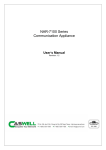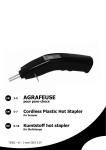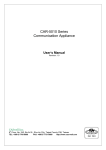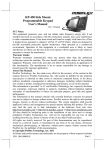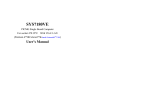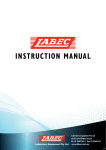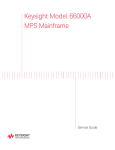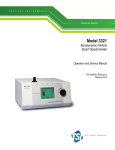Download Art-Tech R/C Hobby User`s manual
Transcript
Remote control radio glider USER S MANUAL Contents Technical Parameter 01 Features 01 Warning 01 Please read the following instructions and fully understand it 02 Main parts of the airplane 02 Flying adjustment 03 Tips for flying 03 Charge mode and warning 03 Li-Po battery Charge mode and warning 04 Caution 04 Assembly 05 Trouble shooting 07 Valuable experience 07 Operating Manual for the radio control system 08 Transmitter particular introduce 09 The process of frequency bind for DSSS series 2.4GHz R/C system 10 Normal flight 11 Inspection and adjustment before flying 12 Adjustment during the flying 12 Spare parts list 13 中 文部分 14-26 Specifications may change without notice, please refer to the real one for configuration. 2010.07 产品以实物为准,若有更改,恕不另行通知。 ENGLISH PARTS Please read this manual carefully and follow the instruction. Thank you for choosing this classical model airplane of Art-Tech. This model is generally for beginner, intermediate and experienced hobby enthusiast. It includes the following accessories: 2.4G transmitter, ESC, motor, battery, servo, etc, which will bring much fun for the manipulator. Technical Parameter: Wingspan: 2000mm/78.74in Battery: 11.1V, 1300mAh Li-Po Length: 1000mm/39.37in ESC: 20A brushless Weight: 760g/26.8oz Motor: DST-1200 outer runner brushless CG position: 25~30% Wing Area: 28 dm 2 Thrust Ratio: ≥0 . 8 Wing load: 30g/ dm 2 Max Flying Time: >45mins Features: 1) Super stable flight performance; 2) High performance for gliding; 3) Large thrust ratio; 4) EPO makes it super crash resistant and impact Warning: 1. This models is not a toy, it is for beginner, intermediate and experienced hobby enthusiast. 2. Please pay much attention to the warning information in this manual. 3. It is highly recommended to fly this models under the guide of experienced person 4. The model will crash even apply the instruction in this manual because of the reaction speed of the user or unsuitable adjustment of the airplane. 5. Users have to improve step by step from the basic knowledge and training to achieve the ideal flying or aerobatic flying. 1 Please read the following instructions and fully understand it. 1) This ASK-21 model is not suitable to fly in the below list place: the crowd, the place with telegraph pole, automobiles, place near the road and aerodrome, you need enough space to control the plane. Please consider the safety for other people and yourself. 1 2) Please don’t fly this model in bad weather 2 3) Do not attempt to catch the plane while flying. 4) Not recommended for children under 12 years old and beginner control this glider alone, Children under 12-14 years old should have a guild line of adults. 3 5) Please take off the battery if you don’t fly this plane, or it may have an accident if others touch the airplane or transmitter 4\5 6) Please keep away from the blade when you put on the battery. No matter if the transmitter is on or off, the flying system may turn on automatically, and the high speed blade may cause an accident. 6 7) Please remember turn on the Transmitter first before flying. Keep away from the blade when battery was put on. 7 8) Please power off the plane before shut down the transmitter after flying, or the blade may turn with high speed and thus cause an accident. 9) Don’t put the charging in wet place. Please pay attention to the charge while charging, the Max charging time is no more than 4 hours. It is normal while the battery get hot while charging. When the battery was full, please unplug the power then leave the charging position. Don’t put the battery near flammable material to avoid fire. 8 Flammables 易燃物 9 Main parts of the airplane: Fuselage, Main wing, Elevator, Avigation aluminum pipe, Bolt, Transmitter, Battery, Charger, Main wheel, Propeller, nose cowl 2 Flying adjustment 1) The ASK-21 glider will have a better perform after fully charged. 2) Beeline flying: Please adjust the inching switch in the transmitter if you find it is a little difficult to fly straightly. For example, when you find the ASK-21 glider flies to the left by aberrancy, please turn the inching switch to the right in the transmitter. 3) Horizontal flying: Please adjust the inching switch in the transmitter if you find it is a little difficult to fly horizontally. For example, when you find that the ASK-21 glider flies upwards by aberrancy, please adjust the inching switch to the upper position so that the servo position will be adjusted. Tips for flying 1) Don’t fly in bad weather 2) Take off: please take off against the wind. The ASK-21 can only take off by hand-thrown. Push the joystick of the power to the maximal before taking off, then catch the fuselage by hands on the top of your head and throw it away horizontally. 3) Glide: You only need to open the power to the maximal so that the ASK-21 Glider can climb 10-40 seconds, then turn off the power slowly, which can achieve the best glide performance. The speed controller of the glider have the brake function, so when you pull the throttle joystick to the minimal, the motor will stop moving during the glide. This is a normal phenomenon. If meet the updraft, the glide time will be longer. 4) Landing: Turn off the power before landing. It needs enough gliding distance and to be against the wind for landing. When the airplane is near the land, you can adjust the joystick and makes it land stably. Charge mode and warning Li-Po battery(balance changer) Specifications: Input voltage: DC 12V~18V Output voltage: DC 11.1V Charge current: 1.5A Indicator state: LED light near to the battery plug turns red: the charger have connected the power supply. LED light near to the DC port turns red: under charging LED light near to the DC port turns green: full charged LED light near to the DC port extinuishs: no charging Separated battery detection: The voltage of any battery reaches 4.2V, the charge of it will cease automatically. Using method: 1. Connect the cigarette with charger per above image 2. Then plug cigarette into its socket in car (Adapter should be connected if charge at home: connect the adapter to home power socket, then plug the adapter’s DC end to charger). The LED will turn red indicating it is ready for charging. 3. Connect the battery to the charger per its interface mark. The LED becomes red, which means the battery is on the way. 4. The LED turns green when fully charged, and the battery will be used at any time. 3 Notice 1. Do not insert any conductive into the cooling hole when power is on, or damage will be caused to the charger. 2. While charging is in process, please do not place it near flammable materials. 3. Expect Li poly battery, this charger is not allowed for other kinds of battery. 4. While charging, please keep it out of the reach of Children. 5. When this charger is in use, please do not go away and leave it unwatched, if any abnormality occurs (such as the power indicator is off, the temperature of the battery rise rapidly, etc.) stop charging immediately. 6. Please do not use power with output voltage higher than 18V. 7. Please do not disassemble the charger or its accessories. 8. When the battery is not cool down, please do not urge to charge it. Safety instructions for Li-poly batteries 01.Do not disassemble or reconstruct the battery. 02.Do not short-circuit the battery. 03.Do not use or leave the battery nearby the fire, stove or heated place. 04.Do not immerse the battery in water or sea water, do not get it wet. 05.Do not charge the battery nearby the fire or under the blazing sunlight. 06.Do not drive a nail into the battery, strike it by hammer or tread on it. 07.Do not impact or throw the battery. 08.Do not use the battery with conspicuous damage or deformation. 09.Do not make the direct soldering on the battery. 10.Do not reverse charge or over discharge the battery. 11.Do not reverse charge or reverse connect. 12.Do not connect the battery to the ordinary charger socket or car cigarette jack. 13.Do not use the battery for unspecified equipment. 14.Do not touch the leaking battery directly, please wash your skin or clothes with water if they are bedewed by liquid leaking from the battery. 15.Do not mix the Li-Poly battery with other un-chargeable battery . 16.Do not continue charging the battery over the prescribed time. 17.Do not put the battery into the microwave oven or high-pressure container. 18.Do not use the abnormal battery. 19.Do not use or keep the battery under the sunlight. 20.Do not use the battery nearby the place where generates static electricity (over 64V). 21.Do not charge the battery when the environmental temperature is under 0℃ or over 45℃. 22.If you find the battery leaking, smelling or abnormal, stop using it . 23.Keep the battery away from the children. 24.Use the specified charger and observe charging requirement (under 1.5A). 25.When using by minors, parents should show them the correct way to charge. Caution 1. Use the original charger. Never charge the battery at more than 1.5 A. 2. Never discharge the battery at more than 5C. Do not discharge too long as this will damage the battery. 3. For full flight time to be achieved please cycle the cells through three flights. 4. Never charge the battery on a carpet floor, this can cause a fire! 4 Assembly 1. Take out left&right wings,and the avigation aluminium bar. 2.Insert the aluminium bar into the steel tube of the left wing and right wing,and make sure the center position of the aluminum bar is in the join of the two wings. 3.Connect wire of aileron servo to Y wire of receiver. 4.Take out the stressful sheet of wing and locked the left & right wings. 5.Screwed the nylon screws,fix the wings in the fuselage. 6.Install control wire-steel of stabilizer wing 7.Fix the stabilizer wing in the fuselage with screws. 8.Install the battery. 5 Assembly 10.Trimming power of each servo's area. 9.Install the canopy 11.The airplane is fully installed,ready to fly. 6 Trouble shooting Problem Cause Solution 1. Battery is not fully charged. 2. The battery of transmitter is Motor does not run 1. Charge the batteries. not sufficient 2. Install a full charged battery 3. Check the wire connection 3. Contact the local dealer inside the model No reaction of the control surface 1. The servo cable didn’t plug 1. Check the connection of properly or inverted plug. the servo cable 2.The servo is damaged 2.Change another servo. 1.The rudder is not in the center Can not fly straight position of the airframe 2.The main wing is not fixed in the center position of the airframe. Can not climb Limited control range 1. The battery is not fully charged. 2. Two aileron are biased downward The batteries are almost flat 1. Adjust the trim switch on the transmitter 2.Re-assembly the main wing 1. Charger the battery 2. Adjust the inching switch on the Transmitter. Install new batteries Valuable experience 1. If you have the simulator, we recommend you to practice with the FMS before you try the ASK-21 . This will be very helpful for your real flight. 2. Check and make sure all the control surfaces work normally and move towards right direction before flying. 3. We recommend you make the glider climb up to 100m height and hover with 30% power. This will be helpful for you to get familiar with the performance. 4. Users should control the airplane genteelly to reduce the risk of crash, and to prolong the working time of the airplane. 5. The turning radius should not be too short or the airplane will be out of control more easily and this may cause more crash incidents. 6. This model is not suitable for low level flying at full power or lange-angle dive. 7. It is normal the aileron servo works in low efficiency when the airplane flies with full speed. 8. Please make sure to take off and land against the wind. The beginners had better fly in breeze and up wing area. 9. Please fly your ASK-21 in the upper front of your head, but not above your head as this will increase the difficulty. 10.If you want to fly it for a long time, please buy more batteries from the dealer. 7 Notes If the parts of the ASK-21 Glider were damaged, please contact the dealer to purchase new components. Operating Manual for the radio control system Components to the R/C system a transmitter, a receiver, a servo, a speed controller Motor The sketch map for connecting the receiver: CH ESC RECEIVER ER61-2.4GHz Signal (White line) (Black line) (Red line) Battery CH RECEIVER ER61-2.4GHz Left aileron servo Rudder servo Right aileron servo Elevator servo 8 Transmitter particular introduce Mode 1 Antenna Carrying bar Hook Elevator down Throttle Max Aileron left Rudder Rudder right left Elevator up Aileron right Throttle Min Trim CH3 Trim CH2 Trim CH1 Trim CH4 Power indicator Power switch Charger port Frequency Switch Reverse switch on rud der Reverse switch on thrott le Reverse switch on elevator Reverse switch on aileron Mode 2 Antenna Carrying bar Hook Throttle Max Rudder left Elevator down Aileron left Rudder right Aileron right Elevator up Throttle Min Trim CH3 Trim CH2 Trim CH1 Trim CH4 Power indicator Power switch Charger port Frequency Switch Reverse switch on rud der Reverse switch on thrott le Reverse switch on elevator Reverse switch on aileron 9 The process of frequency bind for DSSS series 2.4GHz R/C system ! Especial notice: The process of frequency binding for this radio, please follow the instruction of this page. 1. Press the switch for frequency bind, then turn on the transmitter's power. 2. Plug the short-circuit plug into the Receiver in the position of BATT.Connect the ESC to receiver for electricity supply, wihch results to the indicator light glitter. 3. If the frequency bind is successful, the indicator light will light. 4. Pulling out the short-circuit plug.the indicator light turns flash. The rece iver get into working mode. 5. Press frequency bind switch again to get it rebound.The transmitter get into working mode. the indicator light will light.which means that the radio system can work normally now. 10 Normal flight Speed up Left stick pushing up Speed down Left stick pulling down Nose turn left Left stick moving left Nose turn right Left stick moving right nose turn down/ descending Right stick pushing up Nose turn up/ ascending Right stick pulling down The body incline to left Right stick moving left The body incline to right Right stick moving right Chart for R/C mode 2 (left hand throttle) 11 Inspection and adjustment before flying 1. Switch for power supply: Install 8 cells dry batteries in the transmitter according to the symbol of battery’s polarity, then turn on the switch of power. Install the full charged battery into the foreside of the fuselage, and connect the plug of battery with the electronic Speed Controller. To make sure the radio control system working well, you should follow the instruction: turn on the switch of the transmitter before flying (connecting the battery with ESC plug); and turn off the power for receiver first when stop operation (pulling out battery and ESC plug), then turn off the transmitter. 2. The right joystick of transmitter controls the aileron by turning left or right: when you push the joystick on the left, the left aileron of plane will turn up and the right aileron of plane will turn down in response to your action, vice versa. Before flying, put the trim of aileron to the middle position, and then adjust the both ailerons to neutral position by the steel wire grip. 3 The sway of the right joystick in the transmitter controls the power of motor. When holding the fuselage of the plane, please keep other objects away from the propeller in case of hurting people or destroy the propeller. If you push the right joystick in the lowest position, the power of the motor will cease. Now the motor is on standby. You could check the performance of the motor by pushing the joystick up slowly. If you want to cancel standby situation, you could take off battery plug. 4. The up and down of the left joystick of transmitter controls the movement of the elevator. When you push the joystick down, the elevator of plane will be flying up, vice versa. The best state before flying is the elevator, joysticks and inching switches are all in the neutral position. 5. The right joystick in transmitter control the rudder: when you push the joystick on the right, the rudder of plane will turn right in response to your action, vice versa. Rudder, joystick trim should be in the middle before flying. 6. If the servos and motor give no response during the adjustment, please check the connection of the servos and ESC and make sure the battery is fully charged. 7. Check the CG of the glider in windless condition, the CG is near to the main wing, please refer to the picture. Note: The transmitter and receiver should be used in the same set but not be mixed and used with other products. 50m m (Picture for CG) Adjustment during the flying 1. Radio control distance should be tested before the airplane taking off. After loading the battery to the model and transmitter, turn on the switch and keep the control distance about 200 meters between the transmitter and the model. 2. Please turn on the transmitter before taking off the model. The indicator should be green. If it doesn’t, please check if it has been connected well with the battery. If the indicator is red, change the battery. 3. Plug in the power supply, operate the joystick to see whether the movement of the control surface is normal or not. Push the throttle to the lowest position and push it upwards gradually. The propeller will run very fast, which causes big thrust and noise. Then the model can fly from the ground after running or you can throw it off by hand. 12 4. If the motor runs slowly or the thrust is not powerful, please do not take it off. Check if the battery has been fully charged, and if there is any problems with the motor or ESC. The power system can be adjusted during flying to save power and lengthen the flying time, and the recommended method is flying---gliding—flying. 5. If you want to land it after flying for some time, pull the throttle stick to the low position and let it land gently. 6. After landing, plug off the battery power system and then switch off the transmitter, otherwise it will give wrong instruction to the motor. 7. If the battery voltage of the transmitter is under the safety standard, the indicator will become red. Now please land it as soon as possible to avoid it being out of control. 8. If the model always towards to right, please adjust the trim on the transmitter to the left until the model could fly straightly. If the airplane always turn to left, move the inching switch to the right. 9. If the model plane flies nose-down, move the elevator trim to the lower position; If the model moves nose-up or if there is any undulating flight, adjust the elevator trim upwards until level flight. If the trim has reached the limits, please adjust the steel wire grip to make the flight back to normal. Spare parts list No.: 51019 Fuselage set No.: 51029 Main wing set No.: 51039 Horizontal tail plane No. : 51049 Cabin set No.: 51059 Nose cowl No. : 36012 Charger No.: 41411 Li-Po Battery (11.1V, 1300mAh) No.: 35023 Servo set No.: 3302A 20A Brushless ESC No.: 3A01Q Motor set (dst-1200 brushless) 13 www.art-tech.com
















